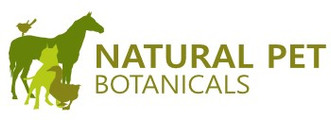Members Only
Eyes – Involuntary, Repetitive Movement of the Eyes
Some animals may develop patterns of eye movement that appear involuntary or repetitive, often described in veterinary contexts as nystagmus. This may be linked with balance, inner ear, or neurological challenges and always requires professional veterinary attention to identify underlying causes.
Once a diagnosis and care plan are in place, gentle natural supports may be considered to help:
-
Encourage calmness and reduce nervous system tension
-
Support balance and comfort in the visual system
-
Complement overall wellbeing while recovery is underway
These supports are not a replacement for veterinary treatment but may assist the animal’s natural resilience and comfort.
Nystagmus in Dogs & Cats
What it is
Nystagmus is an involuntary, repetitive movement of the eyes that may appear horizontal (side-to-side), vertical (up-and-down), or rotary (circular). It signals an imbalance in the vestibular system, which controls balance and spatial orientation.
Possible signs
-
Blurred vision
-
Sensitivity to light
-
Dizziness or unsteadiness
-
Head tilt
-
Loss of balance or circling (ataxia)
-
Nausea or vomiting (vertigo-related)
-
Abnormal posture
Common causes
-
Vestibular disease (peripheral): inner ear infections, trauma, polyps
-
Central nervous system (CNS): stroke, cerebellar disease, tumors
-
Toxins or drugs: certain medications as a side effect
-
Congenital: some breeds (Beagles, Siamese cats) are born with it
Veterinary care first
If your pet suddenly develops nystagmus, it’s important to seek veterinary evaluation straight away. In older pets, some cases may resolve naturally (e.g. idiopathic vestibular disease), but in younger pets it may point to a more serious condition such as stroke, brain tumor, or infection.
Nutritional supports sometimes considered
Certain nutrient deficiencies have been associated with eye and nerve imbalances, and practitioners may look to complementary supports after veterinary guidance:
These nutrients are traditionally valued for supporting nerve health, coordination, and overall vitality. Thiamine in particular has been associated with maintaining motor nerve balance, and deficiency can lead to tingling or “pins and needles” sensations (paresthesia).
Nystagmus in a dog is an involuntary, repetitive movement of the eyes, usually in a back-and-forth (horizontal), up-and-down (vertical), or rotary (circular) pattern. It indicates an issue with the vestibular system, which controls balance and spatial orientation.
Symptoms like...blurred vision, sensitivity to light, dizziness, and problems with balance are all considered while making a prescription for nystagmus.
Causes
Vestibular Disease (Peripheral): Inner ear infections, ear polyps, trauma.
Central Nervous System (CNS) Disorders: Brainstem or cerebellar disease, stroke, tumors.
Toxins or Drugs: Certain medications can cause it as a side effect.
Congenital: Some breeds (like Beagles, Siamese cats) can be born with it.
Associated Signs
Head tilt
Loss of balance or uncoordinated movement (ataxia)
Circling
Nausea and vomiting (due to vertigo)
Abnormal posture
If your dog develops sudden nystagmus, it’s usually a sign of vestibular dysfunction and should be evaluated by a veterinarian. While some cases (like idiopathic vestibular disease in older dogs) can improve on their own'
If a younger pet, then it may indicate a serious condition such as a stroke, brain tumor, or inner ear infection.
* Natural pet botanicals are not intended to replace veterinary care or medication.
SET OF
SET OF 1
NeuroBrain 342 formula
Contains:
Calabar Bean (Physostigma 30C, 1M) has been traditionally recognised in West African practices, where it was associated with resilience, strength, and cultural significance.
Champignon fou Fungi (Agaricus 30X) has a history in European and traditional mushroom knowledge, often linked with vitality and natural balance.
Copper Mineral (Cuprum met 6C) has been valued in European mineral traditions, associated with resilience, strength, and supporting overall wellbeing.
Stink-weed (Stramonium 12C, 30C) has a long tradition in both Native American and European herbal practices, where it was recognised for its protective and transformative associations.
Yellow Jasmine (Gelsemium 30X, 1M) has been traditionally valued in European and Asian practices, linked with calmness, composure, and seasonal balance.
Magnesia Phosphate (Magnesia phos 30C) has historical recognition in European mineral traditions, associated with soothing, balance, and supporting natural vitality.
in 20% USP alc.in purified water.
Need more advice or have more questions? Contact us for a FREE consultation with one of our fully qualified practitioners.
These statements are for general wellbeing and educational purposes only. This product is not intended to diagnose, treat, or prevent any disease. Always seek veterinary or professional advice for specific health concerns.
DISCLAIMER
The statements made regarding these products have not been evaluated by the Food and Drug Administration. The efficacy of these products has not been confirmed by FDA-approved research. These products are not intended to diagnose, treat, cure or prevent any disease. All information presented here is not meant as a substitute for or alternative to information from your health care practitioners. The Federal Food, Drug, and Cosmetic Act require this notice.









